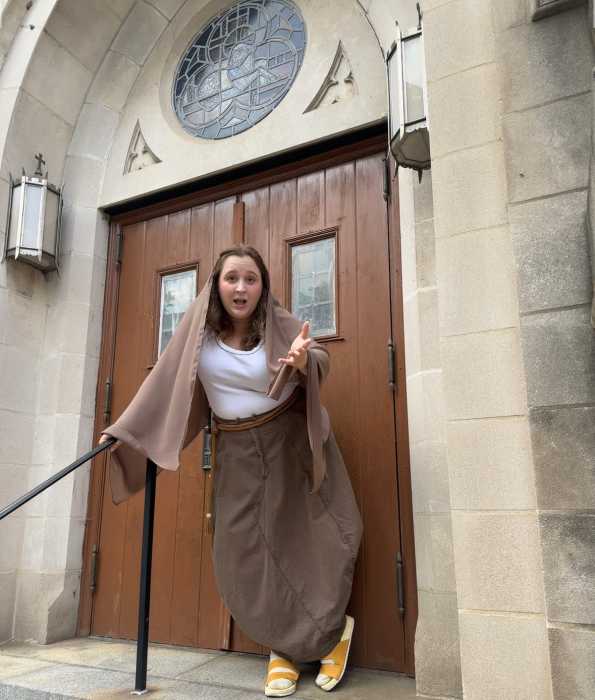The potential scope of the Supreme Court’s June 15 ruling in Bostock v. Clayton County, which found that sexual orientation and gender identity employment discrimination claims are covered by Title VII of the 1964 Civil Rights Act, is vast, despite the narrow focus of the Justice Neil Gorsuch’s decision.
An August 7 decision by the Atlanta-based 11th Circuit Court of Appeals extends the Bostock ruling to equal protection claims made under the 14th Amendment and specifically to discrimination claims by students under Title IX of the Education Amendments of 1972.
A three-judge circuit panel ruled 2-1 that the St. Johns County, Florida, school board unlawfully discriminated against a transgender high school student by forbidding him from using the boys’ restroom. The majority opinion by Judge Beverly B. Martin invoked the Bostock decision in concluding that Drew Adams’ claims should be dealt with as sex discrimination claims that receive the court’s heightened scrutiny under the Equal Protection Clause and are clearly covered by Title IX.
11th Circuit finds discrimination “because of sex” is discrimination in any setting
The Equal Protection Clause says that no state shall “deny to any person within its jurisdiction the equal protection of the laws.” Adopted after the Civil War, the amendment was intended to require the states to treat former slaves as equal citizens in all their dealings with the government, and authorized Congress to enforce its requirements through legislation. It was in the 1970s, in cases litigated by Ruth Bader Ginsberg appearing as an attorney for the American Civil Liberties Union, that the Supreme Court began to apply the Equal Protection Clause to sex discrimination claims.
Federal statutes prohibiting discrimination by state and local governments, such as the Title VII employment provisions and Title IX, are specifically grounded in the 14th Amendment. Title IX states. “”No person in the United States shall, on the basis of sex, be excluded from participation in, be denied the benefits of, or be subject to discrimination under any educational program or activity receiving federal financial assistance.”
When Drew Adams first enrolled in the St. Johns County schools, he was still officially living as a girl, as indicated on his birth certificate. During eighth grade, he began to recognize his male identity, eventually coming out to his parents, receiving appropriate health care, and transitioning in most respects to live as a boy by the time he entered Nease High School a year later. Still, under prevailing standards of care, he had not undergone genital surgery.
Adams had new state government-issued documents identifying him as male under his preferred male name, although he hadn’t yet obtained a federal passport. Teachers, administrators, and fellow students used his male name and treated him as a boy. For the first several weeks of high school, he used the boys’ restrooms without incident.
However, two girls saw him going into a boys’ restroom and complained to the administration. Significantly, no boys actually using the bathroom had raised any objections. Still, the school reacted by warning him he was not allowed to use the boys’ restroom and threatening disciplinary consequences if he did. He was given “two choices,” wrote Judge Martin: “use a single-stall, gender-neutral bathroom in the school office, or use the girls’ facilities.” Since Adams was living and presenting as a boy, he did not want to use the girls’ restroom, which likely would have led to complaints from some girls — who knows, maybe the same ones who complained earlier. The bathroom in the school office was not convenient and using it stigmatized him as well, Adams felt.
Negotiations between Adams’ parents and the school proved futile, so he filed suit, represented by Lambda Legal. The school district’s position was that a student’s sex for purposes of restroom access was based on the documentation presented when they first enrolled in the school district. Although the school was treating Adams as a boy for all other purposes, officials would continue to rely on his original birth certificate and his enrollment forms from years before.
This is not a new story. Transgender high school students have been suing schools about restroom access for years now, and have generally been successful, at least at the trial court level, and in some cases in circuit courts. The federal district court in Florida agreed with those prior court rulings, and the school district appealed to the 11th Circuit, where the case was pending when the Supreme Court decided Bostock. In that ruling, the high court coincidentally overruled an 11th Circuit decision that Title VII does not apply to sexual orientation discrimination claims.
The 11thCircuit, however, had several years ago already recognized that gender identity discrimination claims raise constitutional equal protection issues. In 2011, in the case of Glenn v. Brumby, the circuit anticipated the Supreme Court by nine years, ruling that a transgender librarian suffered an equal protection violation when she was fired by the Georgia Legislature’s research service. There, the appeals court decided that when an employer fires somebody because they are transitioning, they are firing them because of their sex.
Consequently, even without the Bostock case as a new precedent, the 11th Circuit panel already was bound by a circuit precedent to require the school district to justify its action, if the court found that its action was discriminatory. That was the big contested point. The school district argued that it was not discriminating against Adams, just requiring him to respect the custom —protected by a Title IX regulation — that requires boys and girls to use separate facilities. The school district’s argument, of course, is based on the contention that Adams is a girl for this purpose. The district also argued that its policy was necessary to protect the privacy of boys. Noting that there were more than a dozen trans students known to the district, its attorneys also argued that it was protecting the privacy of girls who did not want “boys” in their restroom.
The school district even pushed a far-fetched “gender fluidity” argument, warning students might claim that they could use any restroom they wanted to at any time they were feeling a particular gender identity. Needless to say, the district offered no evidence that this would happen — but this “scare” argument has been used by other school districts as well.
The court noted a major inconsistency in the district’s policy. If Adams had transitioned while enrolled in another school district and then transferred to St. Johns County schools using his new birth certificate, driver’s license, or other state-issued ID to register as a boy, he would be entitled to use the boys’ restroom. So pinning him down on his gender identity stated when he first enrolled years before was arbitrary and not necessary to achieve an “important” policy goal.
The 11th Circuit majority didn’t buy any of the school district’s arguments, agreeing with the district court that Adams is a boy entitled to be treated as one in all respects, as a matter both of equal protection and of Title IX. The court actually did not have to rely on Bostock because of its existing precedent, but cited it anyway as further support for the transgender jurisprudence the circuit had already adopted.
Perhaps more significantly — given the Trump administration’s hostility on this issue — it should be noted that the phrase “because of sex” is used in both Title VII and Title IX to define the grounds of prohibited discrimination. Bostock now offers a definitive Supreme Court interpretation of what that phrase means. According to Gorsuch’s opinion, it is impossible to discriminate against somebody because of their transgender status without discriminating because of their sex. The 11th Circuit’s application of this interpretation to Adams’ Title IX claim stands in stark contrast to the failure of the Department of Justice to rescind former Attorney General Jeff Sessions’ October 2017 memorandum, which instructed all federal agencies that sexual orientation and gender identity discrimination claims may not be brought under federal sex discrimination statutes.
In fact, as noted elsewhere by Gay City News, Attorney General William Barr has not to date responded to a July letter from LGBTQ legal advocates urging him to replace the Sessions memo with one applying Bostock. Not surprisingly, other federal agencies continue to contend that Bostock does not apply to the laws they are responsible for enforcing. This new 11th Circuit ruling may carry great weight with other courts now dealing with the Trump Administration’s arguments defending policy decisions such as its recently announced regulation denying protection to LGBTQ people under the Affordable Care Act’asex discrimination ban.
In another noteworthy post-Bostock development, state courts in Ohio and West Virginia have recognized that existing precedents relying on federal court interpretations of Title VII should be applied to extend protection to LGBTQ people under those state laws. Since a majority of states still do not expressly ban sexual orientation or gender identity discrimination, but all ban sex discrimination, the Bostock ruling may lead to nationwide protection for the large proportion of private sector employees whose employers do not employ enough people — at least 15 — to come within the coverage of Title VII’s federal protections.
To sign up for the Gay City News email newsletter, visit gaycitynews.com/newsletter.



































